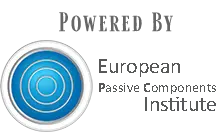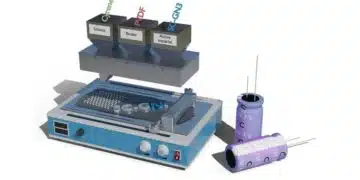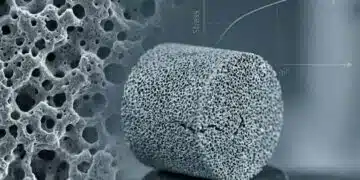This paper High Energy Density Supercapacitors for Space Applications: A Leap Forward in Space Exploration Energy Systems was presented by Victoria Manzi-Orezzoli, Swistor SA, Switzerland during the 5th Space Passive Component Days (SPCD), an International Symposium held from October 15th to 18th, 2024, at ESA/ESTEC in Noordwijk, the Netherlands. Published under permission from ESA SPCD organizers.
Introduction
The exploration of space demands robust, efficient, and sustainable energy storage systems. Traditional batteries, although effective in storing large amounts of energy, face limitations such as lower power densities, reduced efficiency in extreme conditions, and shorter life cycles.
This paper introduces a groundbreaking advancement: Lithium-free, high-energy-density hybrid supercapacitors designed to meet the rigorous demands of space applications.
Authored by Victoria Manzi-Orezzoli and Clara Moldovan from Swistor SA, the study presents the design, experimental results, and potential applications of these innovative supercapacitors.
Key Points
- Novel Technology: Introduction of Lithium-free hybrid supercapacitors with superior energy density (60 Wh/kg) and cell voltage (3.3 V).
- Environmental Benefits: Use of eco-friendly electrolytes and abundant, non-critical raw materials.
- Operational Resilience: High thermal tolerance (up to 85°C) and durability exceeding 100,000 cycles.
- Performance Metrics: Enhanced power density, reduced equivalent series resistance (ESR), and minimal performance degradation.
- Space Applications: Potential to optimize payloads, reduce system complexity, and improve energy efficiency in spacecraft.
Extended Summary
The paper begins by highlighting the escalating energy demands of modern space missions. Traditional lithium-ion batteries, while reliable, struggle with issues like low power density and degradation under extreme conditions. Supercapacitors, particularly Electrochemical Double Layer Capacitors (EDLCs), emerge as promising alternatives due to their rapid charge/discharge capabilities and extended cycle life.
Swistor SA introduces a Lithium-free hybrid supercapacitor that surpasses conventional models in both energy density and operational voltage. By leveraging nanostructured carbon materials combined with redox-active species, the new design achieves an impressive energy density of 60 Wh/kg and operates efficiently at voltages up to 3.3 V. The absence of lithium not only enhances safety by reducing thermal runaway risks but also aligns with sustainability goals.
The experimental section details the development process, including material selection, electrode fabrication, and electrochemical characterization. The researchers fabricated both coin and pouch cell formats, optimized for different space applications. The supercapacitors demonstrated extraordinary durability, maintaining over 80% capacitance even after 100,000 charge-discharge cycles. This longevity is critical for space missions where maintenance and replacements are impractical.
Performance tests revealed that these supercapacitors exhibit minimal resistance increases and maintain high efficiency across various current densities. Compared to commercial EDLCs, Swistor’s supercapacitors not only deliver higher energy densities but also operate at higher voltages, reducing the need for complex series connections in spacecraft power systems.
The paper concludes with a comparison of Swistor’s technology against existing commercial supercapacitors. The results underscore the superiority of Swistor’s design in terms of energy density, power output, and environmental impact. These advancements are achieved without compromising safety, as the supercapacitors are free from critical raw materials and hazardous substances.
Conclusion
Swistor SA’s development of high-energy-density, Lithium-free hybrid supercapacitors marks a significant leap forward in space energy storage technology.
The combination of high power, extended cycle life, and environmental sustainability positions these supercapacitors as ideal candidates for future space missions.
Looking ahead, Swistor aims to scale production, enhance energy and power densities, and meet rigorous space industry standards, paving the way for more efficient and reliable space exploration power systems.
Read the full paper:

































